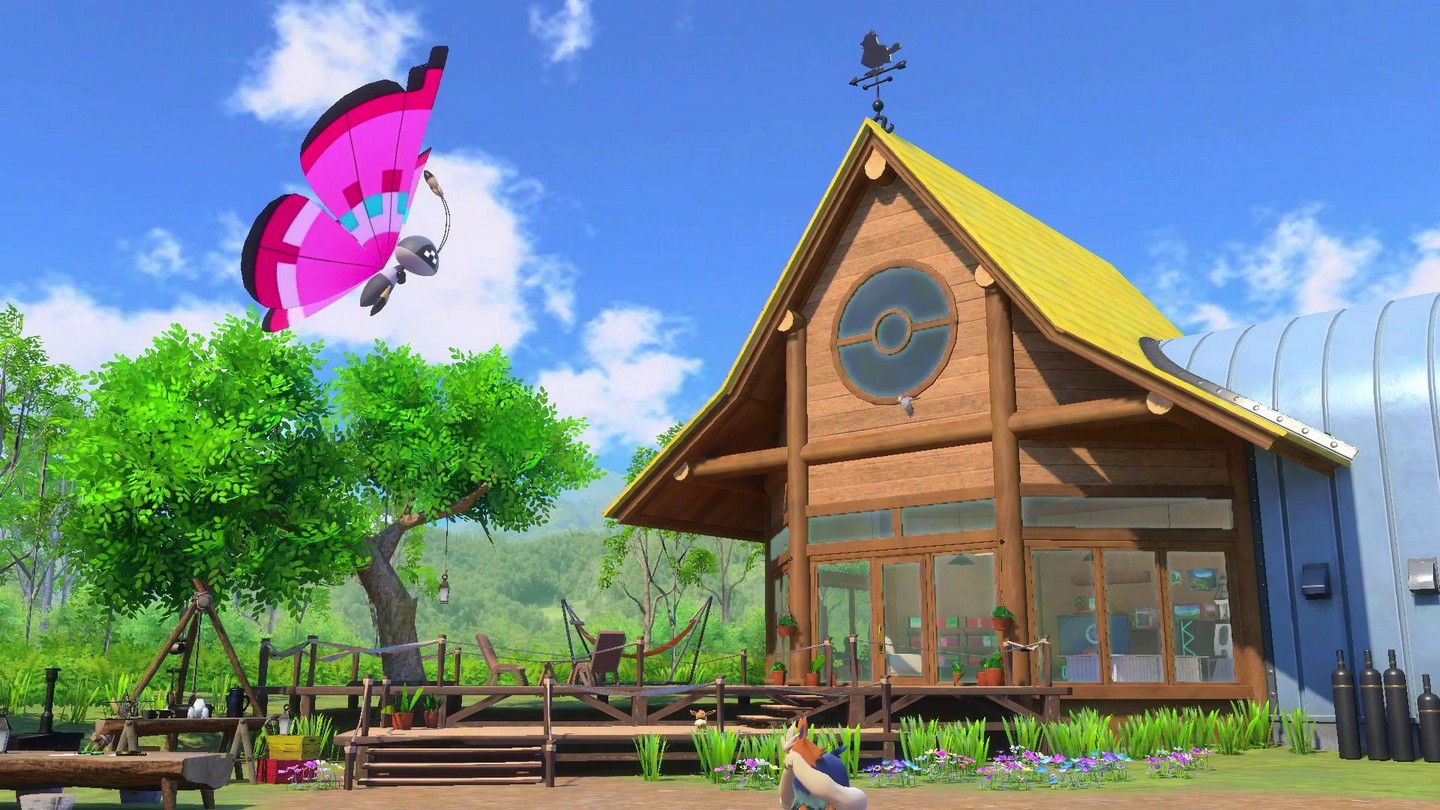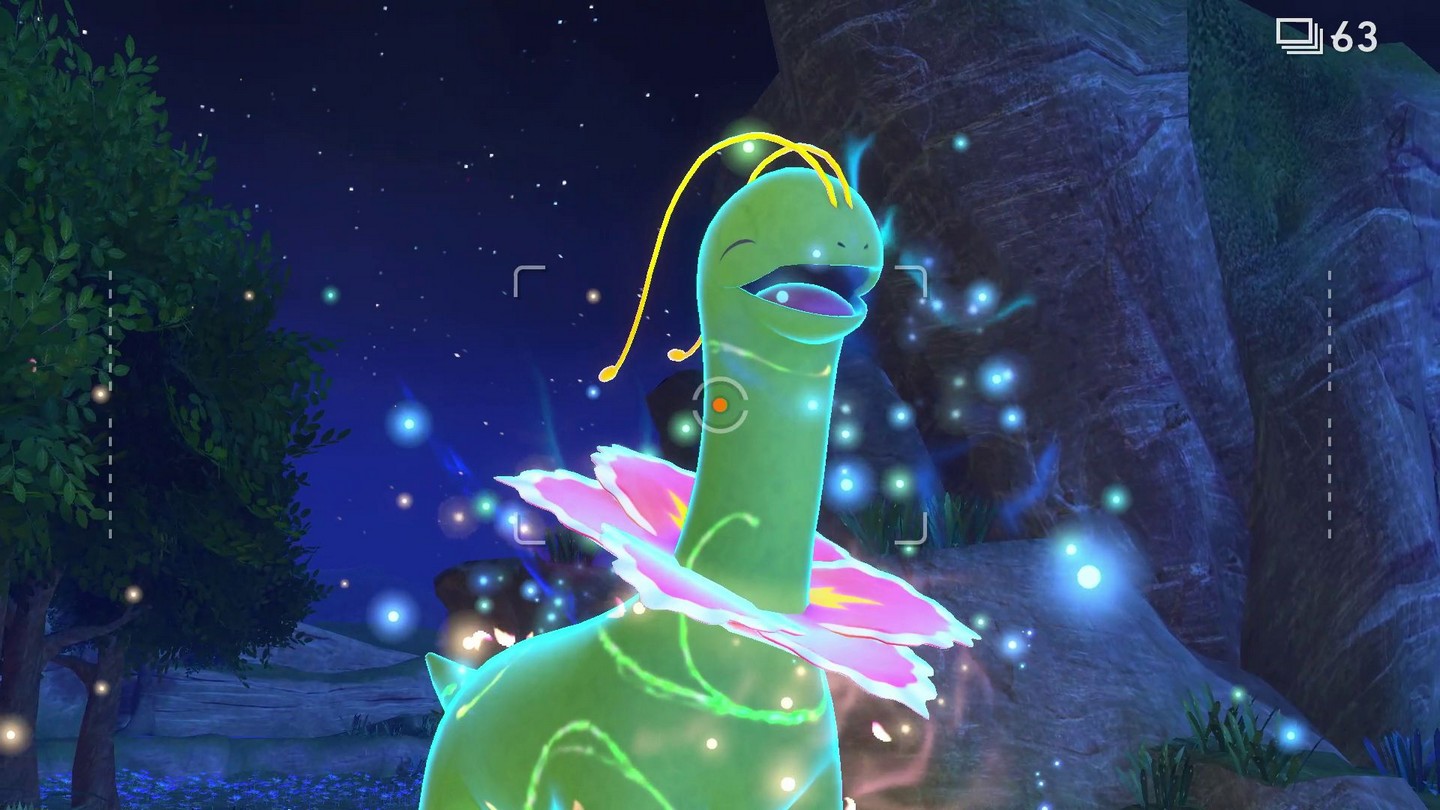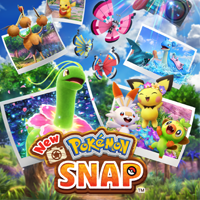WELCOME TO THE SAFARI ZONE
In 1999, at the peak of the first wave of Pokémon fever, a little game called Pokémon Snap was released; it’s big selling point being that for the first time players could see Pokémon in 3D. Nearly every Blockbuster had a machine in it that allowed players to print sticker versions of photos taken in the game. Pokémon Snap was promoted heavily and on the surface, it was nothing more than a photography simulator that was the debut of 3D Pokémon and that would not be an inaccurate assessment, however, Pokémon Snap was so much more than that. Before I can dive into New Pokémon Snap, I need to break down what makes Pokémon Snap such a cult title and why the 22 year gap in between the original and this new title seems a bit absurd.
The ability to see Pokémon interact with one another in various environments like the creatures they are purported to be (and in the hearts of children very much are) has been rarely explored and has been the desire of many fans of the mainline Pokémon games for a long time. One of many complaints about Sword and Shield were that despite being a fully 3D Pokémon game not all Pokémon were seen wandering the environments and I understand that complaint fully. Despite being eclipsed by the 2000 release of Pokémon Stadium, Pokémon Snap is still very much the only game where Pokémon feel like living creatures in the wild and not just game characters. Now it may seem like a quaint statement to make, but not once in 22 years has this been true and there’s been tons of mainline and spin off titles in the interim.

PLATFORMS: SWITCH
MSRP: $59.99
PRICE I’D PAY: $59.99
The second reason is that Pokémon Snap is not just an on rails photography game, but a puzzle game. When starting off, players will just be snapping photos to the best of their abilities but by the end will need to be using multiple tools in their arsenal to set up better shots and get to certain Pokémon to even appear. I have no idea how we managed to figure it out back in the day, but throwing an item into a certain spot of water to spawn a Magikarp to set off a chain of events that later in the course has it splashing into a waterfall and evolving into Gyarados (who dwarfs the player) was and is still a magical puzzle experience that other games have not come close to. This is just one of many puzzle scenarios that Pokémon Snap had in it, and I think the final leg of that game that required the player to find “Pokémon Signs” in the environment still stands out in players’ minds,
So how does New Pokémon Snap hold up to its much beloved predecessor?
Amazingly well.
On the photography side of things, the game is much improved. Taking photos feels intuitive: there’s plenty of options to adjust controls and camera movement speed (the game still takes place on rails) and for those who really want to feel like they are holding the camera there’s motion control which I found interesting but I played the game without using it. There’s still a rating system on photos which can sometimes seem like the game is just making up what rules it wants to follow as it goes along, but now there is also multiple photo slots for each Pokémon meaning there’s no longer a need for choosing which photo of Pikachu is the best as there are a minimum of four different activities it can be photographed doing marked by a series of 1 to 4 stars come evaluation, and only those of the same amount of stars are compared to each other.
How does one get photos of these alternate poses and different activities?
Well the first way is by getting familiar with the Pokémon and letting the Pokémon get familiar with you. New Pokémon Snap introduces a leveling up system for each course and every time the course level increases the Pokémon in the course become more familiar with the player meaning new photo opportunities arise. In a less thrilling way to put it, each course has different layouts of Pokémon to reuse the same environment but offer new photo opportunities. I got sucked into this run mechanic which is why this review is so delayed. It is addictive trying to not only top my previous scores, but to see the level meter increase (there is a point where each course maxes out) and get new photos of Pokémon I have photographed previously.

The second way is that certain Pokémon show up on multiple courses or even on alternate versions of courses they are on like different times of day. The first course has three different levels on the daytime version, two on the nighttime version, and certain levels of the course offer differing paths. It gets complex and a bit intimidating, but the game didn’t feel that way when I played it (it only feels this way in hindsight as I write this).
The third way is the multiple items the game offers. The fruit makes its return from Pokémon Snap and proves itself to be one of the most important items in the game once again as a tool to lure Pokémon into different environments (or to bop them on the head with… which seems cruel). Illumina Orbs are a new item that replaces the Pester Ball in a lot of ways. These orbs cause certain Pokémon to react in new ways but also can illuminate Illumina flowers that can cause certain events to happen (I’ll return to this shortly). The flute sort of returns with a music player, but the tune is grating unlike the flute from Pokémon Snap (the third melody of which is permanently etched into my memory) and the amount of times it finds use is so low I would have rather there be something different altogether than what I feel is the most obvious reach at nostalgia in this entire game (and that is saying something based on other moments in this game that I will not spoil). Fourth is a pulse that is used to highlight Pokémon and objects of interest that some Pokémon react to. That’s a lot to juggle but the highly re-playable stages definitely invite experimentation so there’s rarely a reason to feel overwhelmed.
Some of these harder to get poses/events/activities that Pokémon can find themselves in are hinted at via a new Request system in which NPCs give vague hints as to what to look for and what to do. I think it’s a pretty fair system that doesn’t make the game too easy as nothing is really painted out in black and white.
There’s also the closest a Pokémon Snap game could come to bosses and that’s the Illumina Pokémon stages where the player needs to photograph the elusive glowing Illumina Pokémon. These stages are long and require the most skill to overcome, usually involving not only getting the Pokémon to show up but also getting them to glow by hitting them with Illumina Orbs as they run around frantically in order to get a shot of them because any shot of these Pokémon while they are not glowing doesn’t count. It’s similar to the final stage of the original Pokémon Snap which required the player to hit Mew with an item to break its shield that would conceal it if a photo was taken. Mew was a great payoff at the time. The end of this game lacked that same impact but was still very good. No Pokémon Signs though which was very disappointing.

I think more than anything my only real gripe is that it takes a long time to get the speed boost for the NEO-ONE (the cart the player rides in) which is necessary in a game that not only rewards players for certain shots but also punishes players with going through the same course again if they fail to activate the arbitrary event that opens another passage or get the photo of the arbitrary environmental piece that continues the story. It was uncommon and never too much of an issue for sure, but I think it could have been introduced much sooner and nothing would have been lost in that quality of life improvement especially when repetition is expected.
So it is easy to recommend this to fans of the original game and it is easy to recommend this to fans of Pokémon, but what about people who may have no interest in Pokémon’s main series? Well, if photography is a passion then I think there’s definitely fun to be had here because New Pokémon Snap does feel like a fantasy animal safari where the whole goal is to capture the best photos. The interactions between Pokémon feel natural and while they do things that no animal equivalent does, I think that makes them all the more interesting. New Pokémon Snap is like nothing else on the market and proves that this spin off series should have never been gone for this long.
Review copy of game provided by publisher.

